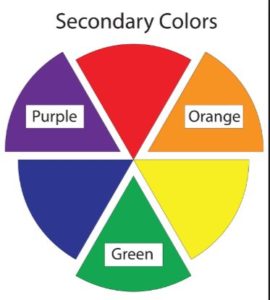
In a previous post, I talked about the psychology behind our primary colors. So many design options however, use the beautiful array of secondary colors – each eliciting their own emotional responses. When we combine two primary colors, we get secondary colors. The resulting hue will depend on the percentage of the colors being mixed and whether they are shades or tints of those colors.
Take any of following combinations of red with a bit of blue: Mauve for instance is a secondary color with more red than blue. It’s soft and subdued, quiet, and sentimental. Burgundy is rich, elegant, expensive, and mature. Fuchsia is bright, hot, high-energy, and sensual. Brick red is earthy, strong, and warm and has a country note to it. Terra cotta is earthy, warm, wholesome, and welcoming. Each has a combination of two colors, but all evoking completely different emotions.
The following are some more commonly used secondary colors and the emotions typically associated with them:
• Orange represents happiness, confidence, and resourcefulness. It is a color for those who desire vitality and a sense of well-being. Orange helps to balance emotions and increase self-confidence and positive thinking. Adding orange or red to a yellow color scheme strengthens its impact.
• Green represents balance, self-control, and harmony. It’s life, nature, calmness, and freshness. It’s sensuous and alive, dependable, and steady. Green represents newness and regeneration; it’s a healer.
• Purple symbolizes beauty, creativity, and spiritualism. It combines excitement and passion. It’s also symbolic of leadership, respect, and wealth. It can reflect emotions from contemplative to regal and majestic.
Learn about more colors and get more tips of how to effectively choose the right color for your space, by picking up a copy of “The Styleprint Design System.” Also, be sure to explore our site as well for additional free resources.






